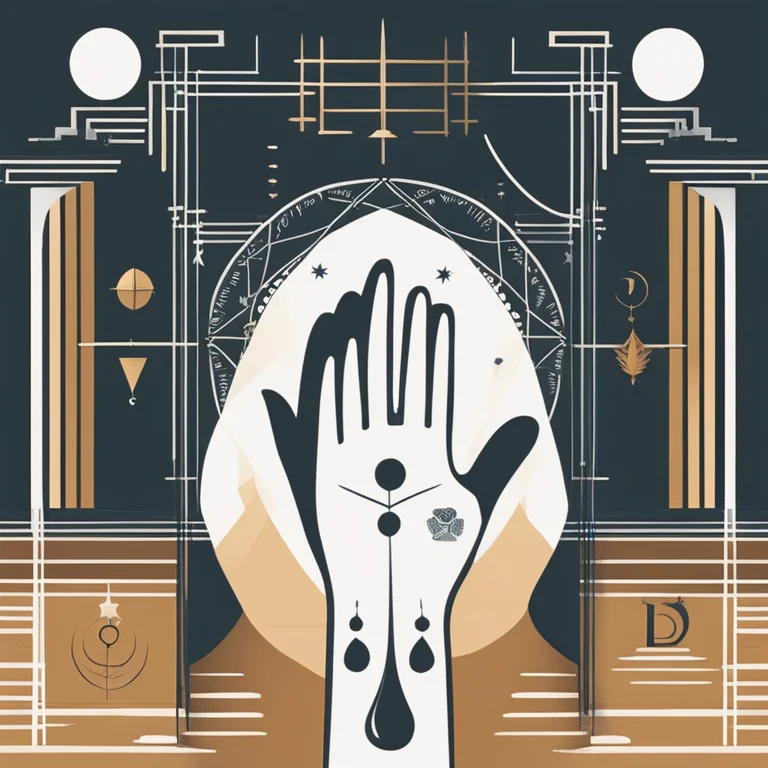
Palmistry: The Historical Overview
Delve into the dawn of palmistry and trace its journey through the corridors of time, uncovering the roots of this ancient practice.
article by Nora Pennington
Tracing Palmistry's Ancient Roots
The practice of palmistry, also known as chiromancy, reaches deep into history's tapestry. Its origins are shrouded in mystery, blending the mythic with the historical. Legend has it that palmistry began in ancient India, with Hindu astrology laying down the foundational principles. Subsequently, these practices were refined by the Romany people who are often credited with bringing palmistry to Europe. Ancient texts, such as the 'Vedas,' contain the earliest references to palm reading, signifying its venerated place in Indian lore.

An Intertwining with Astrology
As civilizations grew and interacted, so did their cultural practices. Palmistry's development was influenced by the knowledge exchange among cultures, particularly the astrological traditions of China, Tibet, Persia, Egypt, and Greece. Aristotle himself is said to have been drawn to palmistry, allegedly finding a treatise on the subject in an altar to Hermes and passing that knowledge onto Alexander the Great. This suggests that by the time of these ancient Greeks, palm reading was already an established art.

Rediscovery during the Middle Ages
Despite its ancient status, palmistry, like many forms of divination, faced a period of decline during the Middle Ages in Europe. Largely suppressed and overshadowed by the rise of Christianity, which dismissed it as pagan superstition, palmistry existed on the fringes. Nevertheless, the Renaissance sparked a resurgence of interest in hermetic sciences and along with alchemy, astrology, and other forms of mysticism, palmistry experienced a rebirth and integrated itself into Western mystic tradition.

Palmistry's Modern Evolution
The journey of palmistry into the modern era featured prominent figures like Captain Casimir Stanislas D'Arpentigny and William John Warner, also known as Cheiro. The latter, in particular, brought palmistry to the masses through his work with celebrities and the publication of popular books on the subject. This era of palmistry emphasized the fusion of astrological concepts with Chiromancy, connecting planets to parts of the hand and tying an individual's fate to the cosmos.

Contemporary Palmistry Practices
Today, palmistry continues to evolve as both a form of entertainment and spiritual practice. The 21st century version of palmistry often combines traditional techniques with modern psychological insights, offering a more nuanced approach to character and destiny. Despite the skepticism still faced by the practice, technological advancements and a renewed interest in spirituality have given palmistry a new platform to reach those seeking self-discovery and guidance.
The Future and Legitimacy of Palmistry
In contemporary times, debates continue over the validity of palmistry as a science or an art. Nonetheless, the practice persists and adapts, with digital palm reading apps and online courses emerging to cater to the modern clientele. As we look to the future, palmistry's rich history assures it will retain a place in the cultural consciousness, resplendent with the possibility of giving insight into the human condition.
Published: 1/11/2024
Modified: 1/11/2024
More predictions
Come back here soon to learn more about yourself and your future


Guide to Palm Reading: Lines and Interpretations
Discover the ancient art of palmistry with our concise guide to reading palms and understanding their meaning for life and personality insights.


The Secrets of Palmistry: Interpreting Hand Reading Lines
Delve into the fascinating world of palmistry and discover what your hand reading lines reveal about your destiny, personality, and future.


Palm Lines: A Guide to Your Hands' Secrets
Learn the art of reading palm lines with our straightforward guide. Discover what your hands reveal about your personality, destiny, and life!